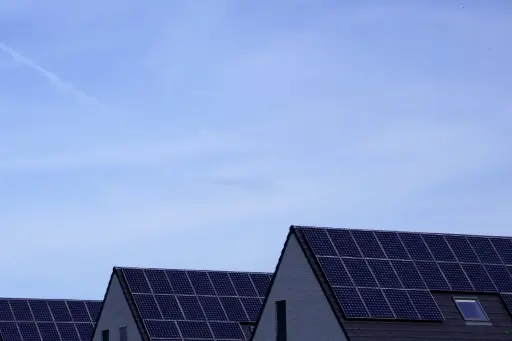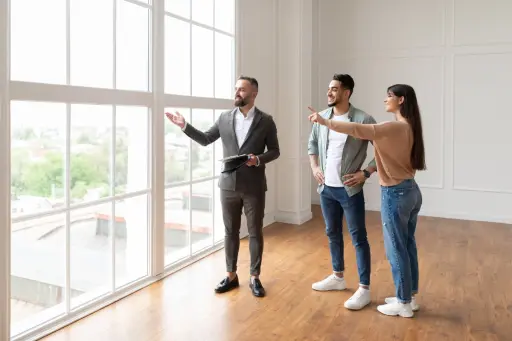Knight Frank
•09 Oct 2025
Eco-Luxury Homes in Dubai: How Sustainability is Shaping the Future of Real Estate
Investor Intelligence
Dubai's luxury property market has always meant ambition and spectacle from breaking towers to waterfront estates that push every limit. The emirate built its name on going bigger and bolder. But something's changing now beneath all that polished marble and glass. The city's smartest developers and buyers aren't just asking how impressive a property can be anymore - they want to know how responsible it is.
This shift from pure spectacle to sustainable luxury marks a real turning point for Dubai's high-end real estate. What used to be a niche thing for a few environmentally conscious buyers has become what everyone expects now, pushed along by government rules, corporate planning, and actual market demand. The result? A new property category the industry calls "eco-luxury", homes delivering the comfort and prestige premium buyers want, but with genuinely lower environmental impact and operating costs.
The Dubai Policy Framework Driving Change
Dubai's transformation toward greener luxury homes didn't happen by accident. It's been deliberately engineered through increasingly rigorous policy frameworks, most notably the Al Sa'fat Green Building Regulations and Specifications. These aren't voluntary guidelines that developers can politely ignore. They set mandatory performance standards for new construction, covering everything from energy efficiency and water consumption to material selection and indoor air quality.
Over the past several years, Al Sa'fat requirements have been progressively strengthened, which means sustainability has moved from being a marketing differentiator to a fundamental compliance issue. Developers working on new luxury projects must now integrate green performance from the earliest design stages rather than treating it as an optional add-on. This regulatory pressure has created a floor beneath which no new premium development can fall.
Beyond municipal rules, Dubai's sustainability push is also shaped by broader national ambitions. The UAE's commitment to reach net-zero carbon emissions by 2050 has cascaded down to the real estate sector, where operational carbon from buildings represents a significant portion of the country's total emissions. Large developers now routinely embed renewable energy systems, waste reduction measures, and water-saving technologies into their projects not just to meet today's regulations, but to future-proof assets against tomorrow's stricter standards.
For developers, this shift represents both challenge and opportunity. Those who treat sustainability as merely a compliance checkbox risk falling behind competitors who recognise it as central to long-term asset value. The smartest players in Dubai's luxury real estate market trends have already begun positioning eco-credentials as a core part of their brand identity.
What Dubai Luxury Home Buyers Actually Want
Regulations alone wouldn't reshape the market if buyers weren't willing to pay for greener homes. Luckily for developers, demand is growing from both directions.
Wealthy individuals increasingly see sustainability practically. Lower utility bills matter even to rich buyers, especially when Dubai's cooling costs run extremely high. Properties with solar generation, good insulation, and smart energy systems offer real savings that add up over years. Buyers also know certified eco-luxury homes hold value better and sell easier, particularly as younger, environmentally conscious buyers enter the market.
Institutional investors are watching ESG credentials closely. Large funds managing luxury property portfolios now routinely check green certifications and carbon footprints during due diligence. Buildings scoring well here command premium valuations and attract capital more easily than comparable properties without sustainability features.
This mix of regulatory pressure and market demand has created perfect conditions for eco-luxury growth. Developers who worried green features might limit their buyer pool are finding the opposite - sustainability broadens appeal across different buyer types.
The Building Blocks of Eco-Luxury Homes in Dubai

Walk through Dubai's new eco-luxury developments and you'll see certain features repeatedly. These aren't just cosmetic touches - they represent real shifts in how buildings get designed, built, and run.
Renewable energy has become standard in premium projects. Solar panels cover rooftops, building facades, and parking structures, generating electricity to offset cooling and common-area consumption. Some larger developments produce enough power to sell excess back to the grid, turning buildings into mini power stations instead of pure consumers.
Less visible but equally important are building envelope improvements. High-performance glass, strategic shading, better insulation, and smart building orientation all reduce the massive cooling burden from Dubai's desert climate. When a building needs less energy to stay comfortable initially, everything from air conditioning to electrical systems can be smaller, cheaper to run, and less carbon-intensive.
Smart technology ties everything together inside. Energy management platforms learn occupancy patterns and adjust automatically. Smart meters show real-time consumption. EV charging comes standard now. Residents monitor and control their environmental impact from their phones as easily as adjusting lights or entertainment.
Water management gets equal attention in a region where freshwater is scarce. Greywater recycling systems capture shower and sink water for irrigation reuse. Low-flow fixtures cut consumption without sacrificing comfort. Landscaping increasingly uses native, drought-tolerant plants that thrive without heavy watering, replacing the water-hungry lawns that used to dominate luxury properties.
Finally, certification provides the framework that makes all these features measurable and comparable. LEED certification and Al Sa'fat compliance have become markers of serious commitment rather than optional badges. When you buy luxury homes in Dubai with recognised green certifications, you're purchasing properties where performance claims have been independently verified and documented.
The Challenges of Eco-Luxury Home in Dubai That Remain
For all this progress, eco-luxury in Dubai still faces significant obstacles. The city's climate presents fundamental challenges that technology can mitigate but not eliminate. Extreme summer heat means mechanical cooling remains essential no matter how clever the passive design. Developers must carefully balance solar generation against the risk that photovoltaic installations themselves create heat islands or unwanted solar gain.
Economics also presents hurdles. High-performance building envelopes, on-site renewable systems, and advanced water treatment all carry higher upfront costs than conventional construction. While these investments typically pay back through lower operating expenses, the initial capital requirement can deter some developers, particularly on mid-market projects where margins are tighter. Making the business case requires sophisticated financial modelling that captures lifecycle costs rather than just construction budgets.
Infrastructure constraints loom as the market scales. Large-scale electrification, whether for electric vehicles, heat pumps, or other systems depends on grid capacity and smart tariff structures that can manage variable loads. Policy coordination between developers, utilities, and regulators will be essential to unlock the full potential of distributed energy systems and storage.
What Eco-Luxury Means for Different Stakeholders

Buyers entering Dubai's luxury market face both opportunities and homework from this sustainability shift. Look past marketing language to actual certifications. Ask detailed questions about expected utility costs and request data from comparable occupied units when possible. Understand what on-site renewable systems actually deliver and what warranties cover major performance systems. Certified eco-luxury properties increasingly command better long-term value because they offer lower running costs and future-proof features that become more valuable as regulations tighten.
Developers competing at the luxury tier need to embed sustainability early in design rather than retrofitting later. Performance-based design, clear certification targets, and compelling narratives about how efficiency benefits owners have become essential. Corporate ESG reporting, once rare in real estate, is rapidly becoming necessary for serious players.
Policymakers face maintaining momentum without killing innovation. Continuing to tighten performance standards prevents market backsliding, while incentives for retrofitting older stock extend benefits beyond new construction. Supporting grid infrastructure upgrades and standardizing certification visibility helps buyers compare projects and make informed decisions.
Looking Ahead
The next few years will probably see eco-luxury shift from experimental projects to what Dubai's major developers just build by default. Tougher regulations, corporate ESG commitments, high-profile sustainable developments, and real buyer demand are pushing this toward rapid mainstream adoption.
Dubai's luxury market is figuring out that sustainability and premium quality aren't opposites - they actually work together. The homes defining next-generation luxury here won't just impress with size or location, but deliver real benefits to owners while leaving smaller environmental footprints.
This goes beyond slapping solar panels on penthouses. It's a fundamental rethink of what luxury means in a region dealing with climate realities directly. Developers and buyers who get this early will be well-positioned as sustainability moves from trendy to expected.